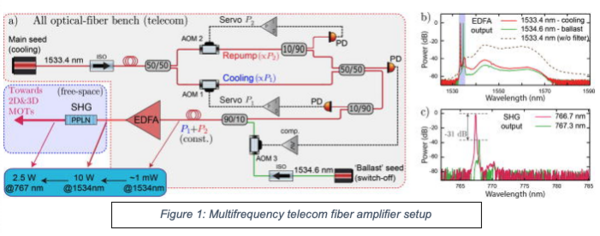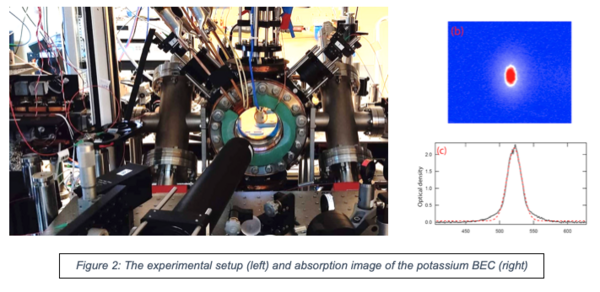Construction of a telecom-fiber-amplifier based potassium BEC experiment
The evaluation period marked a key operation for the future of the Cold Atoms Team, which is the construction of the first Bose-Einstein condensate experiment at PhLAM. The BEC experiment uses potassium atoms with tunable interactions, and its long-term goal is the exploration of new disorder and localization phenomena, in relation with celebrated many-body localization and quantum thermalization problems.

The BEC experiment design features the exclusive use of the telecom fiber amplifier technology (used in the telecom industry) on the scale of the entire experiment – which opens the way towards possible new applications for compact and transportable ultracold atom devices. The setup includes:
- A frequency stabilization scheme based on acetylene saturated absorption spectroscopy, which, combined with an offset phase lock scheme, can virtually cover the entire telecom C-band (xxx-xxx nm) Optics Express 28 494 (2020)
- A multifrequency high-power laser system in the near-infrared (obtained via second harmonic generation) which can address either the D2 (767 nm) or D1 (770 nm) transitions, used to laser cool potassium atoms Appl. Phys. Lett. 119, 204001 (2021)
- A telecom fiber laser system for optical dipole trapping and condensation of potassium atoms. In an original design scheme, we are able to dynamically control the laser power with a >40 dB dynamic range, as well as a >60 dB extinction, without the use any free-space acousto-optic modulators – which avoids unnecessary optical losses and deleterious thermal effects (article in preparation)
- A pulsed laser system, based on telecom pulsed fiber amplifier and second harmonic generation, for periodically driving the potassium BEC and realizing a periodically-driven dynamical system (namely the Kicked-Rotor model) to study quantum chaos and localization phenomena (article submitted in early 2024 arXiv:2402.06573)

